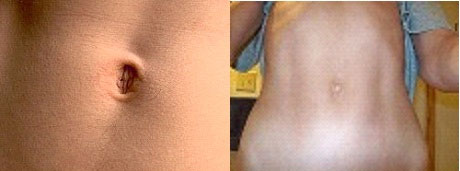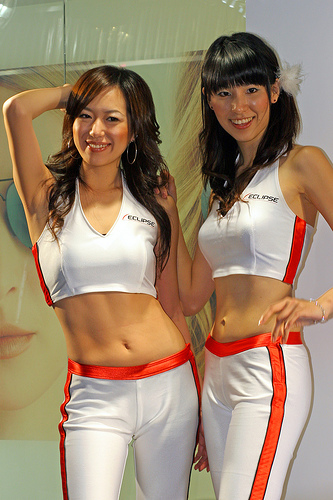
My wife and I are expecting a child at the end of the year. We’ve started to discuss things like what type of crib we want to buy, whether we should circumcise or not, and what kind of college they should go to when they turn 10. The one question that my wife and I hadn’t discussed was innie or outie belly button. So I asked her, what do we want?
You see, I was under the mistaken impression that we had a choice or that it was determined by genetics. My wife told me that I was an idiot and that it was based on the doctor and that neither we nor genetics had a choice in the matter.
I didn’t believe her. So I went online and Googled it.
According to Wikipedia:
In humans, the scar can appear as a depression (often referred to colloquially as an innie) or as a protrusion (outie). Although they can be separated into these two categories, navels actually vary quite widely among people in terms of size, shape, depth/length, and overall appearance. As navels are scars, and not in any way defined by genetics, they can serve as a way of distinguishing between identical twins in the absence of other identifiable marks.
But is Wikipedia for real? Because I can’t think of a single Asian person I know who has an outie. I even checked my belly button and it is indeed an innie. My wife has an innie. My brother has innie. I’m pretty sure my mother and my father have innies as well. I posted a Facebook status update asking my Asian friends if they had outies and everyone told me they had innies.
Is this just a coincidence?
I searched and searched on the Internet and found a few people on random forums who said they “saw” Asian people with an outie or had one themselves. Here is an example of what I found:
Gwen wrote: My bellybutton is an innie, but my cousin had an outie, which totally fascinated me, as it was the only one I had ever seen like that. She is Japanese, and I assumed that all Asian people had outies, a fact that I became very jealous about since it seemed more interesting than my innie. Whenever I was around someone Asian, I would ask to see their bellybutton. After I was told that was a rude thing to ask, I would just try to get a sneaky look at it. I was shocked when I first saw a non-Asian person with an outie!
But with no picture evidence I’m still skeptical. I mean, I could find more people who claim that they saw Big Foot than people who have seen Asian men or women with outies.
 Okay, I admit I found one picture. The woman on the right seems to have an outie (and the title confirms it). But she’s facing sideways and it’s not totally clear if it really is an outie. Even if it is, it says something that there are billions of pictures on the Internet of Asian people and I can only find one picture of an Asian person with an outie? What gives? Is this some global conspiracy that I don’t know about? Isn’t this something we should be talking about?
Okay, I admit I found one picture. The woman on the right seems to have an outie (and the title confirms it). But she’s facing sideways and it’s not totally clear if it really is an outie. Even if it is, it says something that there are billions of pictures on the Internet of Asian people and I can only find one picture of an Asian person with an outie? What gives? Is this some global conspiracy that I don’t know about? Isn’t this something we should be talking about?
Maybe it’s because people with outies are ashamed. Umbilicoplasty (or turning an outie to an innie) has become one of the most popular surgical procedures in the last ten years. I don’t think outies are unattractive; it’s just not my preference. I’m not prejudiced; I think I’m just used to innies. However, if the Internet is any indication of what people “prefer” my very un-scientific research would indicate that innies are “in” and outies are “out.”
However, Asian people with outies should NOT be ashamed of who they are. Stand up. Be proud of your body. So as a community service, I’m going to provide a forum for all the Asian folks with an outie (and at the same time confirm that you do in fact exist). Send me a picture (Koji[at]8asians.com) of your face and your outie belly button (in one shot) and I’ll post them. Please, no naked pictures. Look forward to an inbox full of outies.
[“Outie” Photo by Maxx Manboeuf]
- Excited
- Fascinated
- Amused
- Disgusted
- Sad
- Angry








